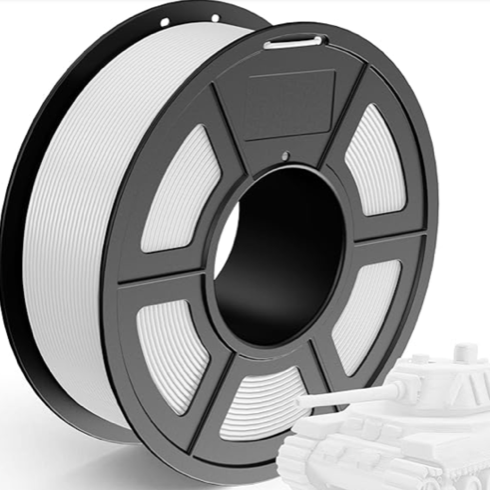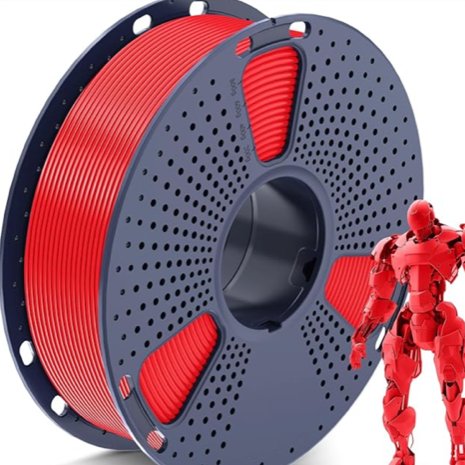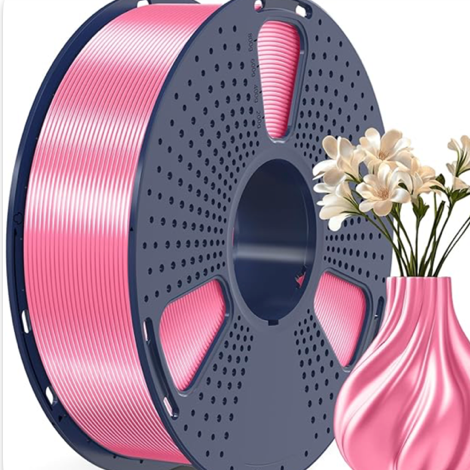Choosing the right filament is important for getting the best results in 3D printing. Each type has unique properties, like strength, flexibility, and heat resistance. The table below compares some of the most popular filaments to help you decide which one is best for your project.
Here are more detailed filament comparisons by Simplify3D or by All3DP
Which One Should You Use?
- Just starting? → PLA is your best bet.
- Need durability? → Try ABS or PETG.
- Want something bendy? → Go for TPU.
- For heavy-duty projects? → Use Nylon.
| Filament Type | Strength | Flexibility | Ease of Printing | Heat Resistance | Special Features | Best For |
|---|---|---|---|---|---|---|
| PLA (Polylactic Acid) | ⭐⭐⭐ | ⭐ | ⭐⭐⭐⭐⭐ (Beginner-friendly) | ⭐⭐ | Biodegradable, many colors | Toys, figurines, prototypes |
| ABS (Acrylonitrile Butadiene Styrene) | ⭐⭐⭐⭐ | ⭐⭐ | ⭐⭐ (Needs high heat & ventilation) | ⭐⭐⭐⭐ | Strong, impact-resistant | Car parts, tool handles, phone cases |
| PETG (Polyethylene Terephthalate Glycol) | ⭐⭐⭐⭐ | ⭐⭐ | ⭐⭐⭐⭐ (Easy to print, but stringy) | ⭐⭐⭐⭐ | Water-resistant, food-safe | Bottles, storage containers, mechanical parts |
| TPU (Thermoplastic Polyurethane) | ⭐⭐⭐ | ⭐⭐⭐⭐⭐ | ⭐⭐ (Needs slow printing speed) | ⭐⭐⭐ | Soft, rubber-like, flexible | Phone cases, shoe soles, bendy toys |
| Nylon | ⭐⭐⭐⭐⭐ | ⭐⭐⭐ | ⭐ (Absorbs moisture, needs high temp) | ⭐⭐⭐⭐⭐ | Extremely tough, wear-resistant | Gears, hinges, industrial parts |
I prefer to buy filament on plastic spools because cardboard spools can sometimes interfere with color changes during prints. However, if I’m printing in a single color, I don’t mind using filament on a cardboard spool. Below is a short list of my favorite PLA suppliers, each offers a wide selection of vibrant colors. I prefer to use Amazon because of a quick delivery. if you are looking for budget deals, check out your local Facebook market place, or check supplier websites directly for sales.
Pick your next step:



